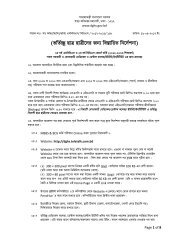Health Bulletin 2009
Health Bulletin 2009
Health Bulletin 2009
You also want an ePaper? Increase the reach of your titles
YUMPU automatically turns print PDFs into web optimized ePapers that Google loves.
Emergency Preparedness & Response (EPR) Program<br />
Bangladesh is a low lying deltaic country in the Indian subcontinent with a land of 147, 570 sq.<br />
km and 145 million inhabitants. Because of the geographical location, monsoonal influence and<br />
the impact of climate change, Bangladesh has been experiencing varieties of natural calamities<br />
such as cyclones, tornados, tidal surge, floods, flash floods, and land slide more frequently over<br />
time. Though significant earthquakes did not take place since over 100 years, potential threats<br />
of earthquakes and tsunamis are inevitable since the Asian fold crosses the eastern border of<br />
the country. Bangladesh has also experienced human induced disasters like fire, infrastructure<br />
collapse, water logging, road and river traffic accident, disease epidemics and various form of<br />
pollution. These events result in loss of valuable lives including injury, increased number of<br />
communicable diseases and huge economic loss, and thereby cause unbearable miseries to<br />
the affected population. Although we have no control over disaster, if we have enough skilled<br />
manpower, adequate logistics and appropriate policy at the right levels, then we can reduce the<br />
adverse health impact of disaster to a greater extent.<br />
Current Activities<br />
1. Training/workshop on psychosocial support, mass casualty management, preparedness<br />
and response in emergency, food & nutrition in emergency, vulnerability & capacity<br />
assessment for hospital staff & health personnel in various tiers.<br />
2. Orientation course for field staff on disaster mitigation and for disaster focal points from<br />
divisional & district levels.<br />
3. Training on emergency health information management for statistical assistants,<br />
emergency information management and emergency disease surveillance for medical<br />
officers.<br />
4. Joint simulation exercises with Bangladesh Red Crescent Society (BDRCS) at most<br />
cyclone prone districts and training on search, rescue, evacuation and first aid during<br />
preparedness following disaster in collaboration with BDRCS and community (multisectoral<br />
approach).<br />
5. Procurement of essential medicine, emergency response vehicle, equipments & other<br />
logistics for emergency response including bleaching powder and water purification<br />
tablets.<br />
6. Consultative meetings on EHA bench marks, review & update of SOP, development of<br />
an earthquake/infrastructure collapse response plan, action plan on information and<br />
control regarding hospital preparedness plan for health sector.<br />
7. Establishment of fully functional health sector disaster management institute<br />
41


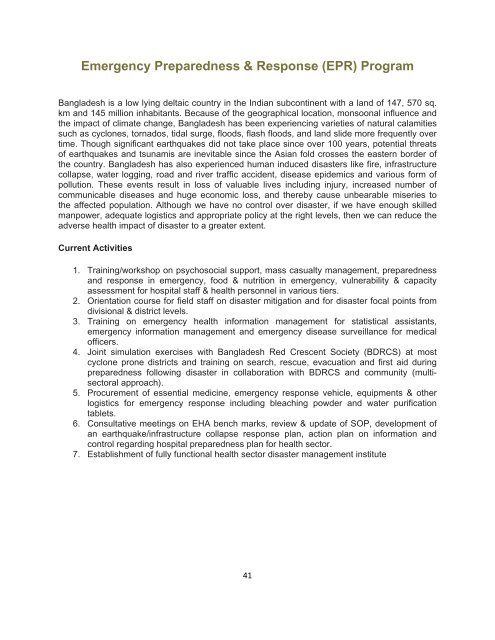
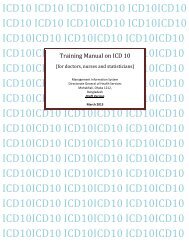




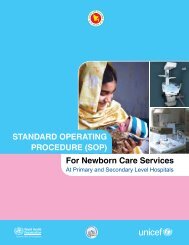
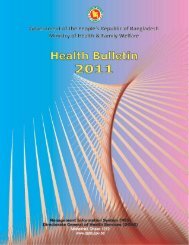
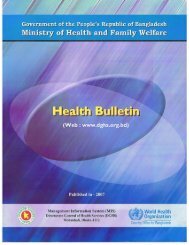
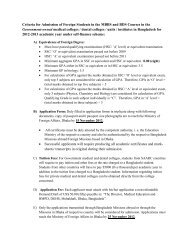
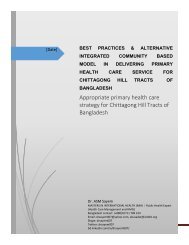
![Bangladesh Demographic and Health Survey 2007 [FR207]](https://img.yumpu.com/38440445/1/190x257/bangladesh-demographic-and-health-survey-2007-fr207.jpg?quality=85)
